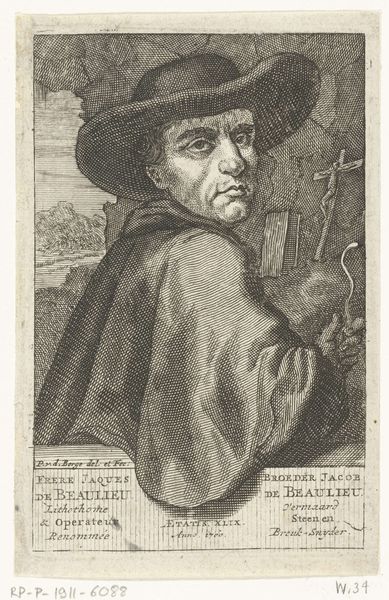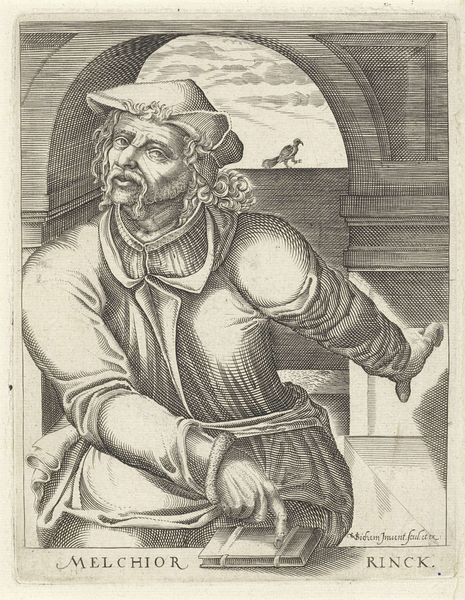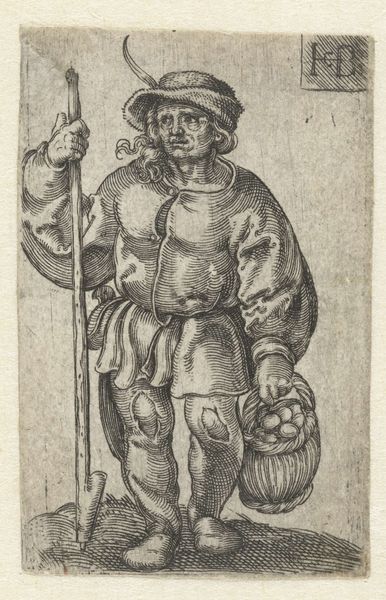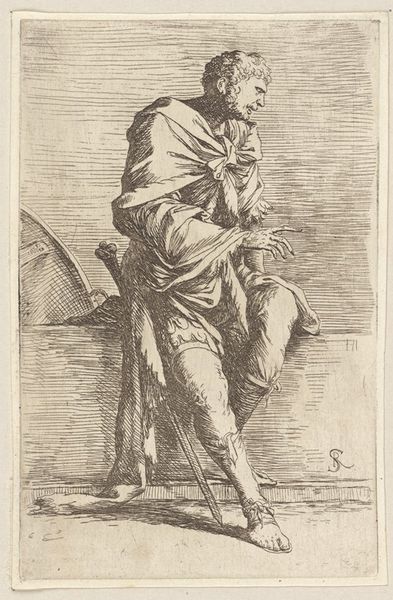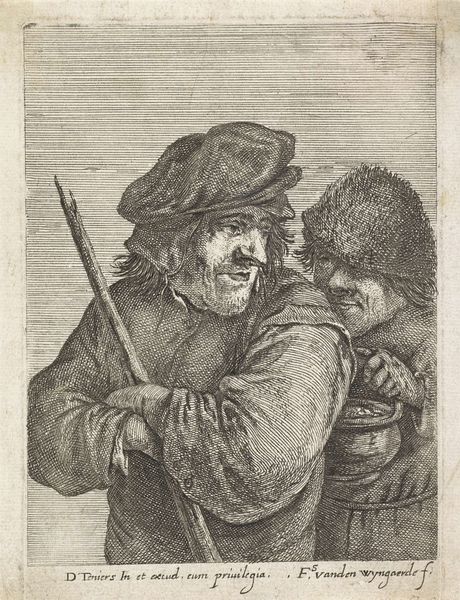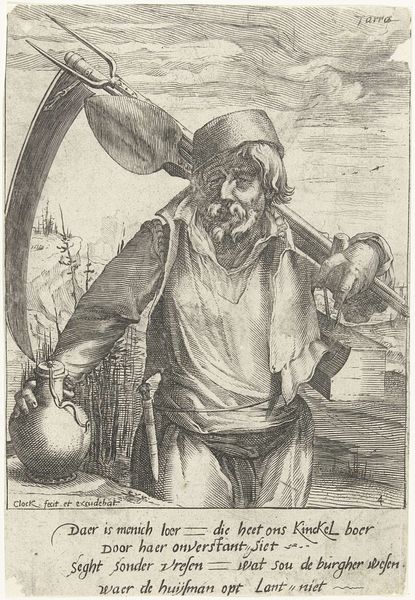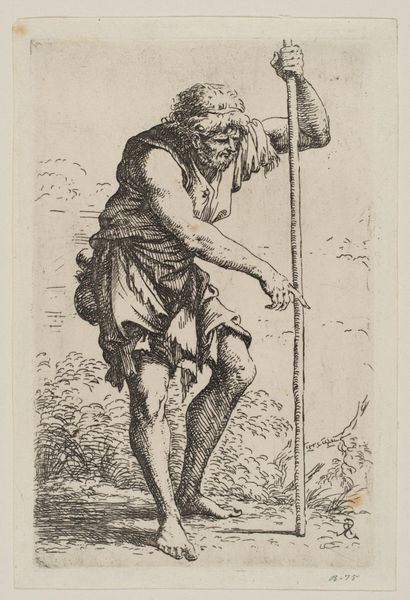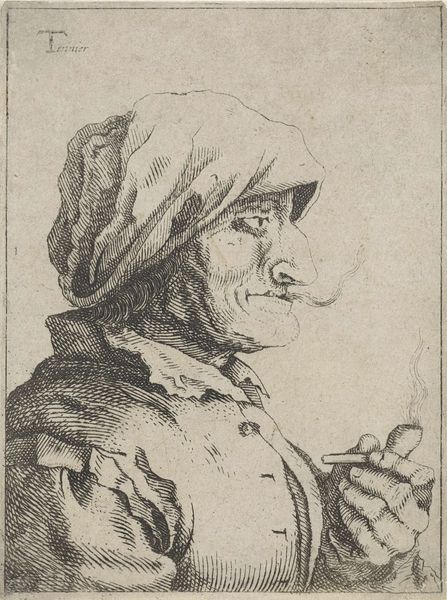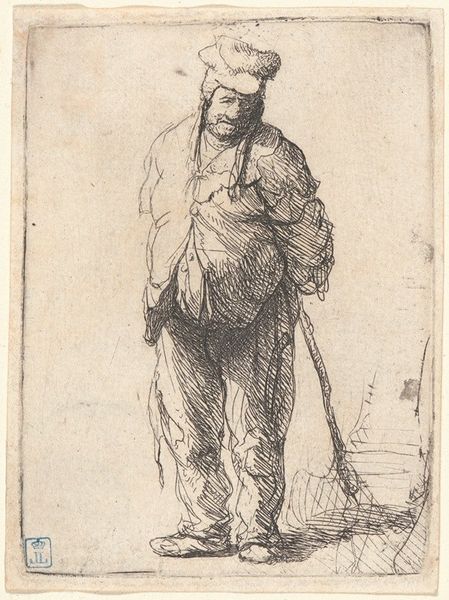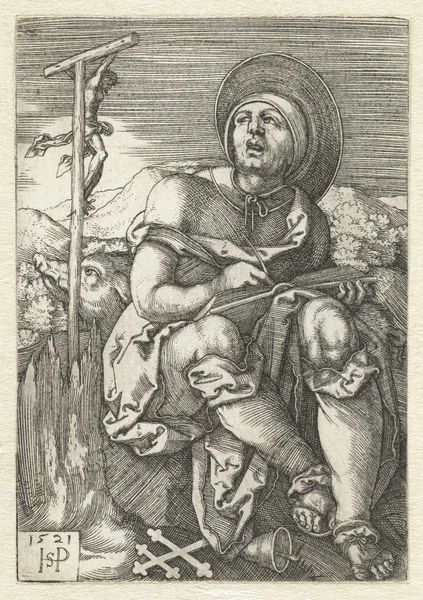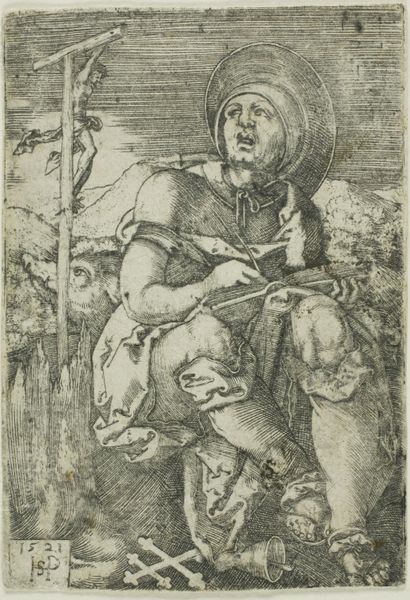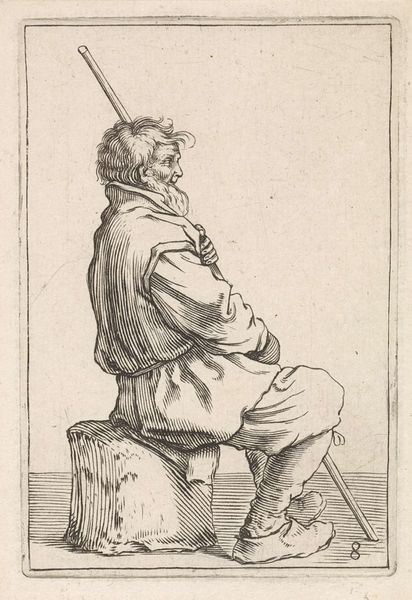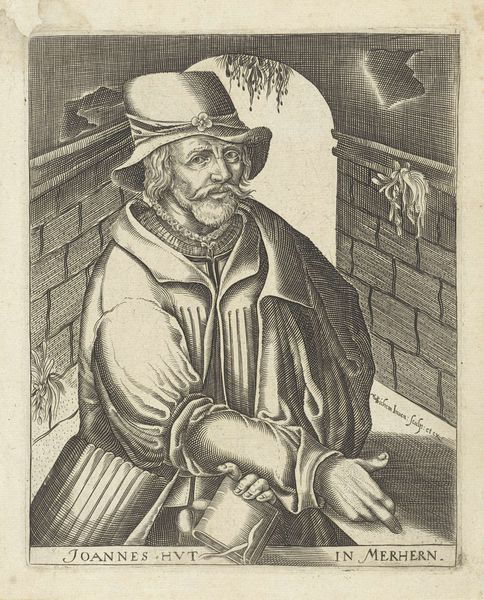
print, engraving
#
portrait
#
baroque
# print
#
form
#
line
#
genre-painting
#
engraving
#
realism
Dimensions: height 174 mm, width 123 mm
Copyright: Rijks Museum: Open Domain
Curator: Nicolaes van Haeften gifted us this image titled "Visser" in 1694, presented in the form of a rather striking engraving. What’s your initial take? Editor: There's an intensity in his gaze. It’s unsettling. As if he’s seen something horrifying or is about to. What exactly does "Visser" mean here? Curator: It translates directly to "Fisherman" in Dutch. Look closely at the details: his worn clothes, the rudimentary fishing gear—the symbolism paints a specific picture of the working class. Van Haeften captures a social reality, the everyday lives of ordinary people. Editor: The cap is almost clownish, ironically so against that furrowed brow and worried expression. I wonder what the socio-political context was like at the time. Were these portrayals of the working class common, or was Van Haeften making a particular statement? Curator: It's more complex than simple social commentary, I believe. Look at how he clings to that rod; the slight tilt of his head shows great wariness. There’s a suggestion of human endurance and vulnerability amidst struggle—archetypal themes with very potent symbolism in unstable times. He captures both social realities and psychological truths. Editor: So, Van Haeften presents us not just with a portrait of a fisherman but a representation of human experience within 17th century Dutch society. The image, etched meticulously, acts almost like a historical document. Was Van Haeften from that same societal stratum? Curator: More likely not! During the baroque era, we find those of a higher station creating artworks illustrating the human condition to emphasize their power, the commoner under their watchful eyes. He might be offering a cautionary vision and perhaps even reflecting the anxieties of the privileged. Editor: Intriguing. So an elite’s anxieties cast through the form of the common man. It gives the engraving another layer of resonance that’s a stark comment on its patrons, which might reflect a society undergoing transformation. Curator: Precisely. It invites us to reconsider familiar stories, the universal tale of people staring back from the visual record. It’s powerful to see an engraving hold so much! Editor: Absolutely, Van Haeften's engraving makes me reflect upon the different perceptions of social status from then and now and its relation to my values. Curator: It reminds me that sometimes the most profound symbols are hidden in the everyday, encouraging reflection.
Comments
No comments
Be the first to comment and join the conversation on the ultimate creative platform.
